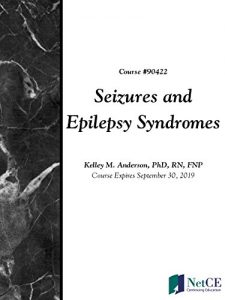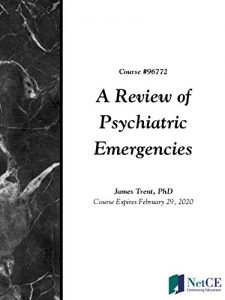The purpose of this course is to expand the understanding of seizure disorders for physicians, nurses, and other healthcare professionals in order to facilitate earlier diagnoses and more effective treatment. In addition, members of the public may use this course to enhance their personal knowledge of the subject matter presented.
Upon completion of this course, you should be able to:
1. Differentiate between a seizure and epilepsy.
2. Recall the incidence of epilepsy.
3. Identify the major etiologies of epilepsy.
4. Describe the phases of a seizure and exacerbating factors.
5. Define the major seizure classifications and seizure types.
6. Discuss the significance of history taking and differential diagnosis in identifying epilepsy.
7. Identify diagnostic studies useful in the care of patients with epilepsy.
8. Detail the management of epilepsy in specific populations.
9. Discuss advantages and disadvantages for the most commonly prescribed pharmacologic agents.
10. Describe nonpharmacologic treatments for epilepsy.
11. Identify the most common complications occurring during or after a seizure.
12. Explain the emergent treatments for status epilepticus.
13. Discuss the prevention of epilepsy and epilepsy-related injury, including specific patient education needs for non-English-proficient patients.
This 10-hour continuing education course is available for download for professional development; if continuing education credit is desired, please see instructions included in eBook.
Upon completion of this course, you should be able to:
1. Differentiate between a seizure and epilepsy.
2. Recall the incidence of epilepsy.
3. Identify the major etiologies of epilepsy.
4. Describe the phases of a seizure and exacerbating factors.
5. Define the major seizure classifications and seizure types.
6. Discuss the significance of history taking and differential diagnosis in identifying epilepsy.
7. Identify diagnostic studies useful in the care of patients with epilepsy.
8. Detail the management of epilepsy in specific populations.
9. Discuss advantages and disadvantages for the most commonly prescribed pharmacologic agents.
10. Describe nonpharmacologic treatments for epilepsy.
11. Identify the most common complications occurring during or after a seizure.
12. Explain the emergent treatments for status epilepticus.
13. Discuss the prevention of epilepsy and epilepsy-related injury, including specific patient education needs for non-English-proficient patients.
This 10-hour continuing education course is available for download for professional development; if continuing education credit is desired, please see instructions included in eBook.












